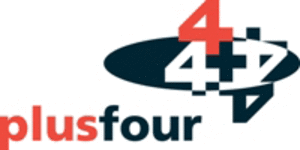When commerce and academia collaborate
In the autumn of 2019, I had the pleasure of attending several university open days as my son considered his options, post A level. There is something inspiring about visiting academic institutions. There is always an energy and openness to what might be possible in the world of research. They are at the heart of the learning agenda and developing the ideas that will help to guide the analytic pathways of the future.
As an industry based on data, and looking to improve analytics, it strikes me that there is huge opportunity to work more closely with academia to answer the current questions that we face.
As data analysts, our goal is to give more actionable outcomes against the backdrop of increasing data complexity. Even when we have the appetite to look at new techniques, budget concerns and a lack of time and relevant skills hamper us. The academic community can offer a haven for research and development that few organisations are able to deliver on their own – and there are tangible mutual benefits to be gained from these partnerships. While many organisations have carved out links with relevant faculties, we can do more.
Providing a great customer experience is essential in our industry and, with the right collaboration and enhanced analytics, we can improve that experience. I’m seeing this first-hand, as my own company has recently partnered with the Visual Geometry Group at the University of Oxford, led by professors Andrew Zisserman and Andrea Vedaldi.
We are sharing the data we collect on product images so the university can test new approaches in AI that will deliver deeper learning, specific to image recognition and product identification and classification. Faster, smarter coding means faster, smarter analytics and improved access to the core data – which translates into a better experience for our client.
I have also seen how the combination of academic principles and commercial requirements can lead to positive outcomes on a more human level.
Neuroscience is a great example of where the knowledge from within the academic world has shaped the way we work and the principles of this research. Needing to find a more flexible methodology in the research, without losing the accuracy, required joint working that has led to techniques that have now been taken into medical research. The positive outcome from this improved evaluation of emotions in advertising led to a new way of monitoring children with epilepsy.
Central to any relationship is, of course, the sharing of knowledge. Sharing my experience, through lecturing on marketing analytics with Lancaster University and Imperial College London, has been of huge benefit to me. I got closer to understanding how these institutions are teaching and developing analytic approaches and which practices and applications I could bring back to work.
In return, I could explain to undergraduates and postgraduate students the way we activate research with our clients and bring to life how the academic approach needs to be shaped within the commercial world.
It all starts with being open to external ideas and approaches to the questions and challenges we face – a problem shared is a problem halved.
Just this year, I attended a meeting with the Professor of Artificial Intelligence at Oxford Brookes University as we looked to understand more about the practical opportunities AI presents. He brought to life the challenges for AI of understanding human emotion in the decision-making process within machine learning.
This generic challenge that faces AI is a great example of how we will need to think differently about consumer and shopper research in the future. Working in a targeted way with the academic community will accelerate our advances and we should embrace the opportunity.
This article was first published in the January 2020 issue of Impact.

We hope you enjoyed this article.
Research Live is published by MRS.
The Market Research Society (MRS) exists to promote and protect the research sector, showcasing how research delivers impact for businesses and government.
Members of MRS enjoy many benefits including tailoured policy guidance, discounts on training and conferences, and access to member-only content.
For example, there's an archive of winning case studies from over a decade of MRS Awards.
Find out more about the benefits of joining MRS here.











0 Comments